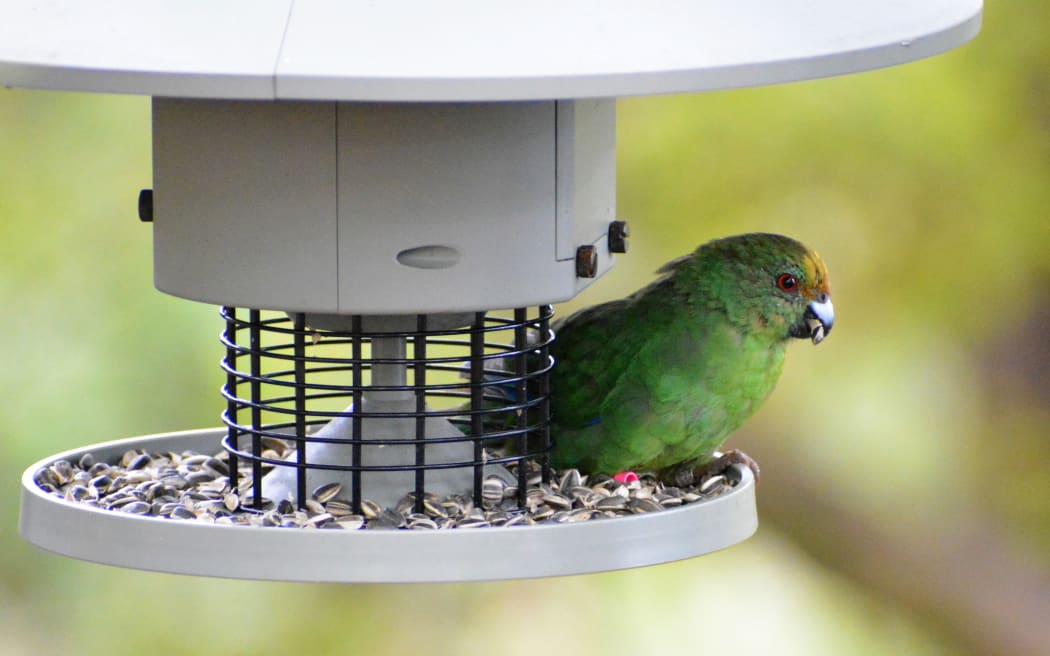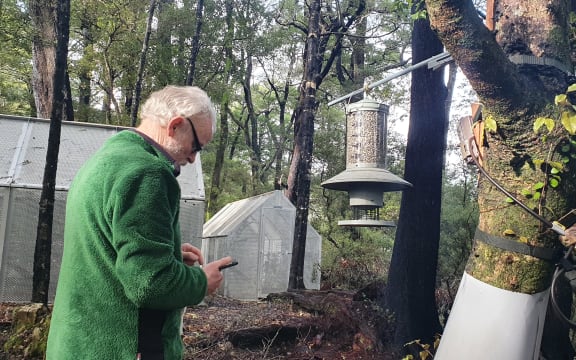Giant carnivorous land snails. New Zealand’s rarest parakeets. And noisy tieke or South Island saddlebacks.
All three species are at risk from introduced predators – and all have recently been given a safe new home on the outskirts of Nelson, inside the Brook Waimārama fenced sanctuary.
The 690-hectare forested valley was once the water supply catchment for Nelson. These days it satisfies a different kind of thirst – for nature and community conservation.

Female kākāriki karaka feeding on sunflower seeds at a Brook Waimarama sanctuary feeding station. S-RP was the first female to nest in the sanctuary Photo: Sean McGrath
Follow Our Changing World on Apple Podcasts, Spotify, Stitcher, iHeartRADIO, Google Podcasts, RadioPublic or wherever you listen to your podcasts.
Orange-fronted parakeets or kākāriki karaka are New Zealand’s rarest parakeet, with just a few hundred birds in the wild in North Canterbury.
In conjunction with the Department of Conservation, the Isaac Conservation and Wildlife Trust runs a captive breeding programme for kākāriki karaka. Starting in November 2021, there were five releases, each of 20 captive-reared birds, into the Brook Waimārama sanctuary.

Kevin Bolitho logging data at the kakariki karaka release site in the Brook Waimarama sanctuary Photo: Alison Ballance
They were released into tall beech forest at the top of the sanctuary, and almost immediately the birds paired up and began breeding. Some pairs produced two clutches of fledglings during their first summer in the sanctuary.
A small team of keen volunteers, including Sean McGrath, Neroli Amyes and Kevin Bolitho, visit the kākāriki karaka release site once or twice a week, to observe the birds, record their nesting behaviour and top up supplementary feeders with sunflower seeds.
As numbers build up, it is hoped that they will spread throughout the sanctuary, giving visitors a chance to see and hear one of New Zealand’s most colourful birds as it makes a comeback.
Listen to the full episode on Our Changing World to learn more.


